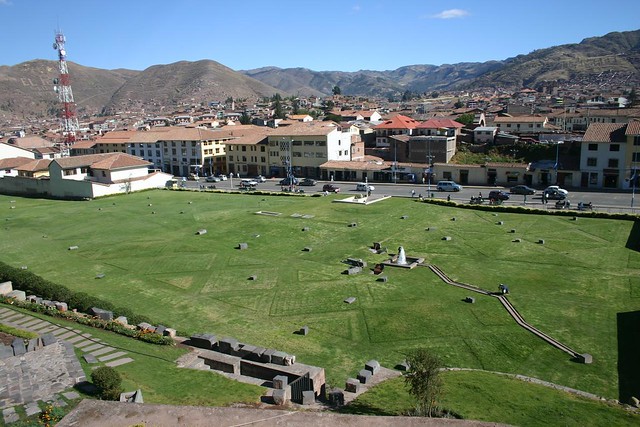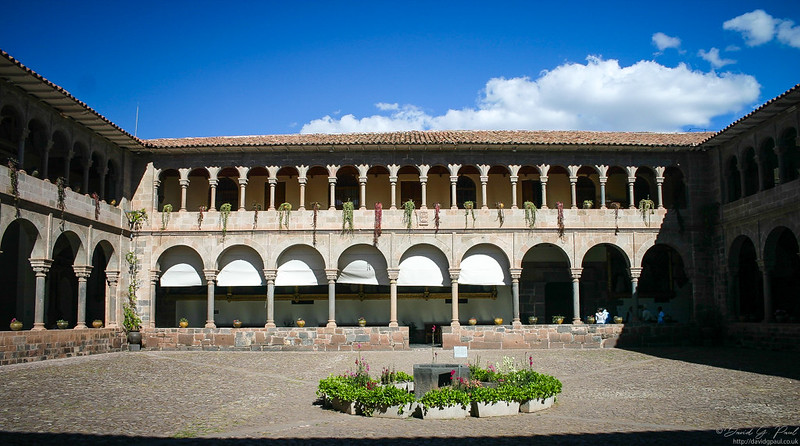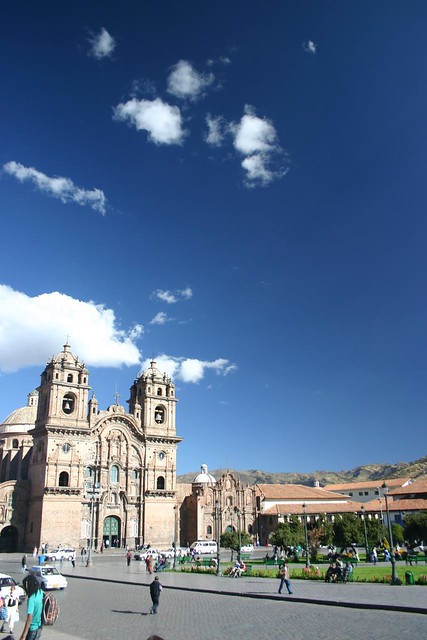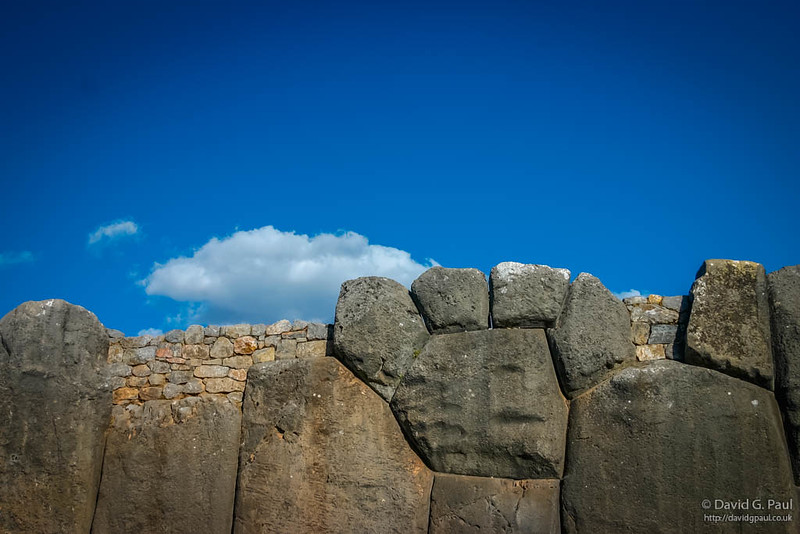On the next day was time to move on, so at 6:20am we up and ready for another basic breakfast. Although the breakfasts consistently in Peru weren’t brilliant, there juices are brilliant. They are freshly squeezed when you want a drink so you can guarantee freshness, and the same goes for the orange juice at breakfast too. By 7am the guide from Amazing Peru had picked us up for the drive to the airport. On the way they picked up an American from another hotel who would also be flying to Cusco, but on an earlier flight. It was a fairly long drive to the airport through busy traffic, but I think it only took an hour to get there.
Since it’s only a domestic flight it’s quite a basic check-in and is quite quick, and by just after 10am we were up in the air. The flight only took about an hour to get to Cusco (also spelt as Cuzco), but it was an interesting flight as we never really had to descend much and we got to see a lot of settlements in the Andes below us. Another advantage of it being a domestic flight is that it only took 20 minutes from landing to get through baggage collection and be in the car park waiting for Amazing Peru to pick us up.
Since the airport in Cusco is right inside the town it didn’t take long to reach the Samay Hotel; which we had about 2 hours to settle in to before we were picked up for an afternoon tour around Cusco. The first place we visited was a 2-3 minute walk from the hotel, yet we drove there as we had to pick up an American first. The place was called Qoricancha (also spelt as Korricancha in some guides) which was an amalgamation of Spanish and Inca architecture – the first time we’d seen anything like it since arriving in Peru. The reason for this joining of cultures is that the Incas’s “Temple of the Sun” was there before the Spaniards arrived, and when they did they knocked down most of the existing structure and built their church in it’s place – but incorporating some of the existing walls to try and make it easier for the Incas to accept Christianity as their faith.
It was whilst going round Qoricancha that we had our first experience with how high Cusco actually is – my friend had to wait outside on the mini-bus whilst the rest of us looked round due to him suffering with altitude sickness. Whilst at Qorricancha it was the first time our guide had commented on the inclination of the walls typical of Inca architecture and also on the smoothness of the large rocks. It is amazing what the Inca people achieved, but there are only so many times you can bear to hear the same piece of information repeated over a few days.
Once we’d done there the mini-bus took us to Cusco’s Plaza de Armas – the main square; which again was in easy walking distance of the hotel (and with all the narrow roads and one way streets it would probably have been quicker to walk too). At the main square there are two cathedrals – one is the largest one in Cusco, and the other is the most important. Unfortunately, when we arrived the cathedral was closed for afternoon mass so we decided we’d come back to this later – so we drove higher into the Andes to the ruins of a fortress called Sacsayhuaman (pronounced Sac-say-wham-an) which overlooks Cusco.
Some of the stones from the fortress stand over 9 metres high and weigh around 250 tons. As you can see from the picture of me on the previous page, even the smaller of those rocks are really massive! This place was still very much an archaeological site as students (some present at the time) continue to dig for Inca ruins and relics. The next stop on this tour of Cusco was slightly higher up in the Andes and was little more than a cave. It was called Tambo Machay, a place that was used to worship the trinity of the three worlds: the sky, the land, and the underworld (which the cave represented).
Finally we returned to the Plaza de Armas (known as Huacaypata to the Incas), the main square, to finally go inside the cathedral there. The cathedral itself were built from stones the Spaniards took from Sacsayhuaman between 1560 and 1664. About a week before we arrived the cathedral had played host to their most important religious festival – Corpus Christii, and as a result there were numerous idols that had been carried from churches all over to this one place as part of the ceremony. Decorating the walls were many paintings; hundred of years old replicas of famous paintings produced by Incan artists – all of which had been changed ever so slightly by the artist during the copy. Making up part of the Cathedral is the Iglesia del Triunfo (Church of Triumph) which was the first colonial church in the city and was built in 1539.
Afterwards we headed back to the hotel for a short rest before heading back out with an American to the Tenupa restaurant for a folkloric show and a buffet meal Here they served a wide variety of traditional Peruvian dishes and performed traditional Andean dances and music whilst dressed in various regional styles of dress which differed depending on the tribe which they were from. The good food and entertainment made it seem that time had passed much quicker than we expected, and by the time we were back at the hotel my friend had about recovered from his altitude sickness.



